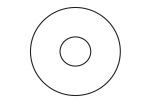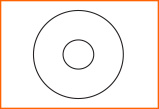Read – Talk – Map / Write
Skills Addressed
• Reading with attention to meaning, not just “word calling”
• Purposeful reading (rereading) of text to verbalize information to partner
• Self-monitoring of comprehension (“What do I really understand?”)
• Recalling what was read while not looking at text
• Talking and writing (non-stop) for sustained periods
• Writing information in own words rather than copying from text
Prerequisites
• Understanding that reading is more than pronouncing the words
• Experience with thinking about the meaning while reading
• Willingness to talk to and listen to a partner
• Ability to express what one learned from a text orally (and in writing)
Steps Involved
1. Students establish partnerships; decide who is A, who is B.
2. Everyone reads text individually and silently for 60 seconds (teacher times).
3. Students then turn over or close the text.
4. A (or B) students tell their partners what they read, talking for 60 seconds.
5. B (or A) students take their turn at talking for 60 seconds.
6. Students map and/or write individually what they learned, with their text still closed.
RELATED LEARNING PRINCIPLES
• Comprehension is reinforced and enhanced by adequate processing time.
• Bursts of concentrated attention are better than continuous attention.
• Articulating what one has learned reinforces the learning.
• Learning is enhanced when students read, listen, speak, and write.
• Meaningful repetition cements learning.
Application
This strategy works across grade levels and content areas. In K-1 to start, teacher can read text aloud, have pairs talk, then have class tell main points while teacher writes students’ words on chart (Listen-Talk-Dictate) or do Read-Talk-Draw (students draw things from the story). At all levels, to differentiate instruction, have students read different texts, matched to their reading levels. Have students use Read-Talk-Map-Write independently when they are doing research for reports or studying.
Use of Visual Tools (e.g. Thinking Maps to capture what they have just read)
The Circle Map, which is used for brainstorming would be an excellent map to use. The Frame of Reference could also be used for schema to process the text further. Schema is text to self connections; text to text connections and text to world connections. See the sections on schema and frame of reference for further information.
Updated from the Source: D. Nessel, M Jones, and C. Dixon, Thinking Through the Language Arts (Macmillan, 1989).


